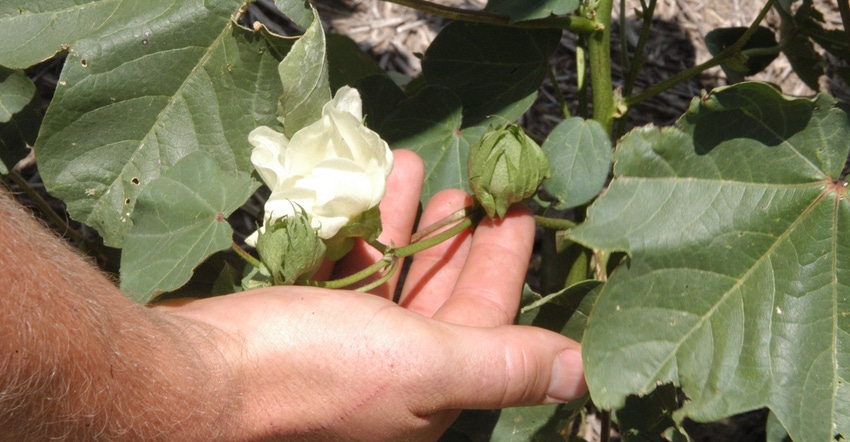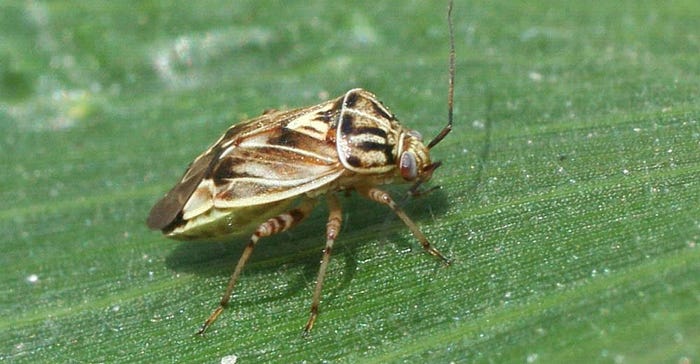
Lots of heat with plenty of moisture has the Kansas cotton crop looking "really beautiful," according to Sothern Kansas Cotton Growers crop consultant Rex Friesen.
With the crop growing fast, however, it’s time to think about getting growth regulator applied, and Friesen is recommending adjusting rates upward for bigger plants. Growers who have not yet seen blooms have no natural brakes to plant growth that will come later when bolls start to fill.
Friesen says that if it starts to dry out significantly �— or if you are unlucky enough to be in the "finger" of extreme drought in central Kansas — excessive growth may have already shut down, and a timely application of mepiquat will not be as important.
In discussing the potential problems cotton growers need to be watching for, Friesen mentioned weeds and bugs, especially tarnished plantbugs, which are around in big numbers this year.
The biggest weed problem is pigweeds and, as always, you have to get them when they are small before they become difficult to control.
"If you don’t get them on the first trip, it may be really hard to come back and finish them off," Friesen says. "So it if your best shot the first time around. However, in dicamba cotton, back-to-back treatments about 10-14 days apart seem to offer the best hope. However, with the severe label restrictions on dicamba, you may not get the weather conditions that let you get the second application on the crop."
Friesen says it may not be possible to kill pigweeds with chemicals. Growers who have to resort to a hoeing crew to get rid of weeds or prevent them from setting seed should contact him, and he will try to help locate a crew. Friesen's email is [email protected]
Tarnished plantbugs numerous
The bugs are in southern Kansas in big numbers. They are about a quarter-inch long as adults. Nymphs are lime green, smaller and wingless. They can be surprisingly hard to find, and it may take multiple sweep net samples in different locations to find them.
Damage from the feeding nymphs shows up in intermittent square loss.
 PESKY BUG: Tarnished plantbugs are showing up in significant numbers in Kansas cotton fields. They are hard to detect, but even low numbers need treatment.
PESKY BUG: Tarnished plantbugs are showing up in significant numbers in Kansas cotton fields. They are hard to detect, but even low numbers need treatment.

"You may see several plants with excellent square retention right beside plants that are missing at least a few," he says. "The losses increase as the nymphs hatch out and grow. They don’t get wings until they are adults, so they can’t fly to new locations. They feet on the plants that are close to where they hatch."
Friesen says that if you find at least one tarnished plant bug in a set of 25 sweeps, it is time to treat. He recommends 6-8 ounces of Acephate 90. He says he is investigating other chemicals in case a resistance problem develops, but that alternatives are typically more expensive.
"As with all chemicals, be sure to read the label carefully and make sure you are using them correctly," he says "I urge producers not to use pyrethroids in the early season even though they are cheap and effective. They tend to be hard on the beneficial insects that keep aphids and mites under control. I’d recommend saving them for later if or when bollworms show up."
About the Author(s)
You May Also Like




